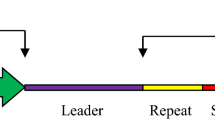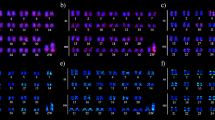Abstract
The distribution of Alu and L1 retroelements in the human genome changes with their age. Active retroelements target AT-rich regions, but their frequency increases in GC- and gene-rich regions of the genome with increasing age of the insertions. Currently there is no consensus on the mechanism generating this pattern. In this paper we test the hypothesis that selection against deleterious deletions caused by ectopic recombination between repeats is the main cause of the inhomogeneous distribution of L1s and Alus, by means of a detailed analysis of the GC distribution of the repeats on the sex chromosomes. We show that (1) unlike on the autosomes and X chromosome, L1s do not accumulate on the Y chromosome in GC-rich regions, whereas Alus accumulate there to a minor extent; (2) on the Y chromosome Alu and L1 densities are positively correlated, unlike the negative correlation on other chromosomes; and (3) in gene-poor regions of chromosome 4 and X, the distribution of Alus and L1s does not shift toward GC-rich regions. In addition, we show that although local GC content of long L1 insertions is lower than average, their selective loss from recombining chromosomes is not the main cause of the enrichment of ancient L1s in GC-rich regions. The results support the hypothesis that ectopic recombination causes the shift of Alu and L1 distributions toward the gene-rich regions of the genome.







Similar content being viewed by others
References
Bailey JA, Carrel L, Chakravarti A, Eichler EE (2000) Mol evidence for a relationship between LINE-1 elements and X chromosome inactivation: The Lyon repeat hypothesis. Proc Natl Acad Sci USA 97:6634–6639
Bailey JA, Liu G, Eichler EE (2003) An Alu transposition model for the origin and expansion of human segmental duplications. Am J Hum Genet 73:823–834
Baker RJ, Wichman HA (1990) Retrotransposon Mys is concentrated on the sex-chromosomes—implications for copy number containment. Evolution 44:2083–2088
Batzer MA, Deininger PL (2002) Alu repeats and human genomic diversity. Nature Rev Genet 3:370–379
Belle EMS, Webster MT, Eyre-Walker A (2005) Why are young and old repetitive elements distributed differently in the human genome? J Mol Evol 60:290–296
Bennett EA, Coleman LE, Tsui C, Pittard WS, Devine SE (2004) Natural genetic variation caused by TEs in humans. Genetics 168:933–951
Boissinot SP, Furano AV (2001) Adaptive evolution in LINE-1 retrotransposons. Mol Biol Evol 18:2186–2194
Boissinot S, Entezam A, Furano AV (2001) Selection against deleterious LINE-1-containing loci in the human lineage. Mol Biol Evol 18:926–935
Brookfield JFY (2001) Selection on Alu sequences? Current Biol 11:R900–R901
Brouha B, Schustak J, Badge RM, Lutz-Prigget S, Farley AH, Moran JV, Kazazian HH (2003) Hot L1s account for the bulk of retrotransposition in the human population. Proc Natl Acad Sci USA 100:5280–5285
Charlesworth D, Charlesworth B (1995) Transposable elements in inbreeding and outbreeding populations. Genetics 140:415–417
Charlesworth B, Charlesworth D (2000) The degeneration of Y chromosomes. Philos Trans Roy Soc London Ser B Biol Sci 355:1563–1572
Charlesworth D, Charlesworth B, Marais G (2005) Steps in the evolution of heteromorphic sex chromosomes. Heredity 95:118–128
Chow JC, Yen Z, Ziesche SM, Brown CJ (2005) Silencing of the mammalian X chromosome. Annu Rev Genom Hum Genet 6:69–92
Cooper DM, Schimenti KJ, Schimenti JC (1998) Factors affecting ectopic gene conversion in mice. Mammal Genome 9:355–360
Cordaux R, Hedges DJ, Batzer MA (2004) Retrotransposition of Alu elements: how many sources? Trends Genet 20:464–467
Dewannieux M, Esnault C, Heidmann T (2003) LINE-mediated retrotransposition of marked Alu sequences. Nature Genet 35:41–48
Erlandsson R, Wilson JF, Paabo S (2000) Sex chromosomal TE accumulation and male-driven substitutional evolution in humans. Mol Biol Evol 17:804–812
Eyrewalker A (1993) Recombination and mammalian genome evoutionl. Proc Roy Soc London Ser B Biol Sci 252:237–243
Feng QH, Moran JV, Kazazian HH, Boeke JD (1996) Hum L1 retrotransposon encodes a conserved endonuclease required for retrotransposition. Cell 87:905–916
Gu ZL, Wang HD, Nekrutenko A, Li WH (2000) Densities, length proportions, and other distributional features of repetitive sequences in the human genome estimated from 430 megabases of genomic sequence. Gene 259:81–88
Hackenberg M, Bernaola-Galvan P, Carpena P, Oliver JL (2005) The biased distribution of alus in human isochores might be driven by recombination. J Mol Evol 60:365–377
Hasty P, Riveraperez J, Bradley A (1991) The length of homology required for gene targeting in embryonic stem-cells. Mol Cell Biol 11:5586–5591
ICGSC (2004) Sequence and comparative analysis of the chicken genome provide unique perspectives on vertebrate evolution. Nature 432:695–716
IHGSC (2001) Initial sequencing and analysis of the human genome. Nature 409:860–921
Jurka J (1997) Sequence patterns indicate an enzymatic involvement in integration of mammalian retroposons. Proc Natl Acad Sci USA 94:1872–1877
Jurka J, Milosavljevic A (1991) Reconstruction and analysis of human Alu genes. J Mol Evol 32:105–121
Jurka J, Smith T (1988) A fundamental division in the Alu family of repeated sequences. Proc Natl Acad Sci USA 85:4775–4778
Jurka J, Kohany O, Pavlicek A, Kapitonov VV, Jurka MV (2004) Duplication, coclustering, and selection of human Alu retrotransposons. Proc Natl Acad Sci USA 101:1268–1272
Karolchik D, Baertsch R, Diekhans M, Furey TS, Hinrichs A, Lu YT, Roskin KM, Schwartz M, Sugnet CW, Thomas DJ, Weber RJ, Haussler D, Kent WJ (2003) The UCSC Genome Browser Database. Nucleic Acids Res 31:51–54
Ke X, Collins A (2003) CpG islands in human X-inactivation. Ann Hum Genet 67:242–249
Lahn BT, Page DC (1999) Four evolutionary strata on the human X chromosome. Science 286:964–967
Langley CH, Montgomery E, Hudson R, Kaplan N, Charlesworth B (1988) On the role of unequal exchange in the containment of TE copy number. Genet Res 52:223–235
Lobachev KS, Stenger JE, Kozyreva OG, Jurka J, Gordenin DA, Resnick MA (2000) Inverted Alu repeats unstable in yeast are excluded from the human genome. EMBO J 19:3822–3830
Lyon MF (1998) X-chromosome inactivation: a repeat hypothesis. Cytogenet Cell Genet 80:133–137
Medstrand P, van de Lagemaat LN, Mager DL (2002) Retroelement distributions in the human genome: variations associated with age and proximity to genes. Genome Res 12:1483–1495
Meunier J, Duret L (2004) Recombination drives the evolution of GC-content in the human genome. Mol Biol Evol 21:984–990
MGSC (2002) Initial sequencing and comparative analysis of the mouse genome. Nature 420:520–562
Montgomery EA, Huang SM, Langley CH, Judd BH (1991) Chromosome rearrangement by ectopic recombination in Drosophila melanogaster—genome structure and evolution. Genetics 129:1085–1098
Morgan MT (2001) Transposable element number in mixed mating populations. Genet Res 77:261–275
Myers S, Bottolo L, Freeman C, McVean G, Donnelly P (2005) A fine-scale map of recombination rates and hotspots across the human genome. Science 310:321–324
Ohshima K, Hattori M, Yada T, Gojobori T, Sakaki Y, Okada N (2003) Whole-genome screening indicates a possible burst of formation of processed pseudogenes and Alu repeats by particular L1 subfamilies in ancestral primates. Genome Biol 4
Pavlicek A, Jabbari K, Paces J, Paces V, Hejnar J, Bernardi G (2001) Similar integration but different stability of Alus and LINEs in the human genome. Gene 276:39–45
Petrov DA, Aminetzach YT, Davis JC, Bensasson D, Hirsh AE (2003) Size matters: non-LTR retroTEs and ectopic recombination in Drosophila. Mol Biol Evol 20:880–892
Ross MT, Grafham DV, Coffey AJ, et al. (2005) The DNA sequence of the human X chromosome. Nature 434:325–337
Rozen S, Skaletsky H, Marszalek JD, Minx PJ, Cordum HS, Waterston RH, Wilson RK, Page DC (2003) Abundant gene conversion between arms of palindromes in human and ape Y chromosomes. Nature 423:873–876
Skaletsky H, Kuroda-Kawaguchi T, Minx PJ, Cordum HS, Hillier L, Brown LG, Repping S, Pyntikova T, Ali J, Bieri T, Chinwalla A, Delehaunty A, Delehaunty K, Du H, Fewell G, Fulton L, Fulton R, Graves T, Hou SF, Latrielle P, Leonard S, Mardis E, Maupin R, McPherson J, Miner T, Nash W, Nguyen C, Ozersky P, Pepin K, Rock S, Rohlfing T, Scott K, Schultz B, Strong C, Tin-Wollam A, Yang SP, Waterston RH, Wilson RK, Rozen S, Page DC (2003) The male-specific region of the human Y chromosome is a mosaic of discrete sequence classes. Nature 423:825
Smit AFA, Toth G, Riggs AD, Jurka J (1995) Ancestral, mammalian-wide subfamilies of line-1 repetitive sequences. J Mol Biol 246:401–417
Soriano P, Meunierrotival M, Bernardi G (1983) The distribution of interspersed repeats is nonuniform and conserved in the mouse and hum genomes. Proc Natl Acad Sci USA Biol Sci 80:1816–1820
Stenger JE, Lobachev KS, Gordenin D, Darden TA, Jurka J, Resnick MA (2001) Biased distribution of inverted and direct Alus in the human genome: Implications for insertion, exclusion, and genome stability. Genome Res 11:12–27
Yang S, Smit AF, Schwartz S, Chiaromonte F, Roskin KM, Haussler D, Miller W, Hardison RC (2004) Patterns of insertions and their covariation with substitutions in the rat, mouse, and human genomes. Genome Res 14:517–527
Zar JH (2004) Biostatistical analysis, 4th ed. Prentice Hall, Upper Saddle River, NJ
Acknowledgments
We thank Deborah Charlesworth and both anonymous referees for their constructive reviews, which greatly improved the manuscript, and Thorsten Reusch and Edward Brede for their critical reading of an early draft of this paper. G.A. was supported by a postdoctoral fellowship from the Alexander von Humboldt Foundation and the Max Planck Society.
Author information
Authors and Affiliations
Corresponding author
Additional information
Reviewing Editor: Dr. Deborah Charlesworth
Electronic Supplementary Material
Rights and permissions
About this article
Cite this article
Abrusán, G., Krambeck, HJ. The Distribution of L1 and Alu Retroelements in Relation to GC Content on Human Sex Chromosomes Is Consistent with the Ectopic Recombination Model. J Mol Evol 63, 484–492 (2006). https://doi.org/10.1007/s00239-005-0275-0
Received:
Accepted:
Published:
Issue Date:
DOI: https://doi.org/10.1007/s00239-005-0275-0




